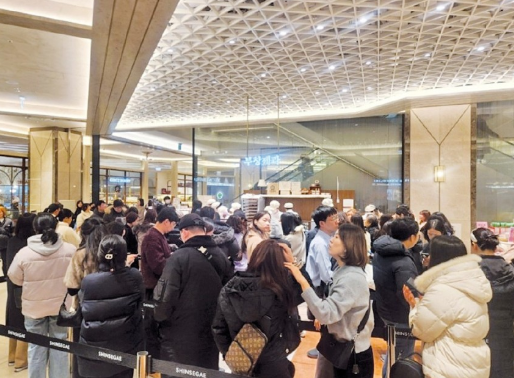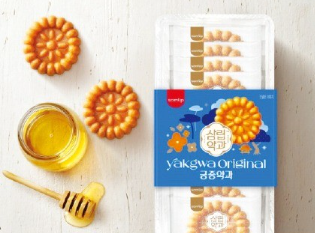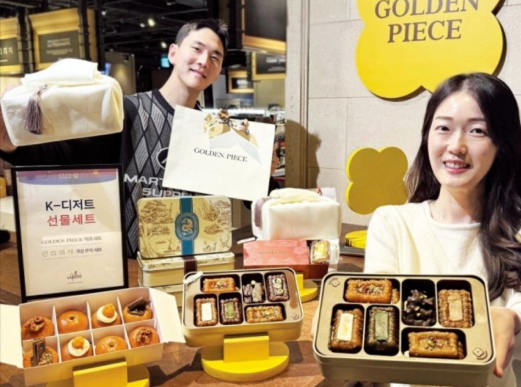
Traditional snacks such as yakgwa, walnut bread, and injeolmi are attracting attention as new foods. Yakgwa, a traditional Korean snack, has emerged rapidly as it has attracted attention from the MZ generation to the extent that it has coined the term “grandmother + millennial.” It is gaining popularity as it fits the taste of Generation Z who enjoys various shapes and beautiful colors by authenticating them through SNS.
The third branch of Buchang Jegwa, a walnut bread specialty store famous for Lee Jang-woo’s walnut bread, opened at Starfield in Suwon, Gyeonggi Province on Tuesday. More than 3,000 people visited Buchang Jegwa on the day. When it opened its first store at Shinsegae Department Store’s Gangnam branch in October last year, it took as long as four hours to wait. Buchang Jegwa is also planning to enter a Japanese department store by the end of this year. SPC Samlip said it will export “Honey rice cake” late last year. As “Honey rice cake cereal,” which is eaten by pouring milk into honey rice cake instead of grain cereal, has become popular overseas recently, the company has decided to establish overseas markets. It is considering exporting to the U.S., Europe, and Southeast Asia in the first half of this year.
Recipes for honey rice cake cereal have spread mainly through overseas SNS. If you search for honey rice cake cereal on social media such as TikTok and YouTube, you can easily see videos of overseas influencers pouring milk into honey rice cake. “It is chewy like bubble tea and tastes better than regular cereal,” said one of the influencers overseas. Besides walnut bread and honey rice cake, yakgwa, hoppang, injeolmi, and bungeoppang are also gaining popularity among young domestic and foreign consumers.
According to Curly, sales of traditional snacks such as rice cakes, Korean sweets, and yakgwa increased by 30 percent year-on-year last year. Rice cakes grew the most at 30 percent, while Chinese sweets and yakgwa also grew by double digits.
Exports of rice-processed foods, the main ingredient of K-desserts, are also on the rise. According to the Ministry of Agriculture, Food and Rural Affairs, rice-processed foods’ exports amounted to 299.2 million U.S. dollars last year, more than doubling from 2020. SPC Samlip exports yakgwa to Costco in the U.S. and Don Quixote in Japan. Paldo has also been exporting “Birak Sikhye” to Indonesia since last year. K-culture is the source of K-desserts, including K-pop and K-drama. “As Dalgona, which appeared in Netflix drama “Squid Game,” gained huge popularity worldwide, interest in Korean snacks such as yakgwa, bungeoppang, and rice cakes has increased,” said a source from the retail industry.

Some analysts say that consumers who are tired of the Western-style snack craze such as donuts and bagels that have continued in recent years are turning to K dessert. It is explained that young people who are seeking new consumption are getting sick of the bagel craze, which started by the London Bagel Museum in 2021 after the doughnut craze in 2017. An industry official said, “For young consumers, yakgwa or walnut snacks are rather refreshing food.”
With the popularity of K-desserts increasing, there is also a phenomenon of “reverse import” in which Koreans enjoy Korean desserts discovered by foreigners. Honey rice cakes are a good example.

The retail industry is also actively engaged in marketing activities with K-desserts at the forefront. GS25 has been selling Hong Mandang’s “Strawberry Mochi” since early this month, which sparked a boom in Korean fruit glutinous rice cakes. Hong Mandang is a dessert brand that started in Myeongdong, Seoul in 2012, and is best known for its sticky rice cakes that contain whole fruits. CU, in partnership with Yonsei Milk, has also been selling fresh cream cakes since last year.
Industry sources point out that for the K dessert craze to continue for a long time, new menus and recipes need to be developed not only overseas but also in Korea. They say that it must deviate from the framework of traditional foods by developing menus through new combinations such as premium products using high-end ingredients or honey rice cake cereals.
SALLY LEE
US ASIA JOURNAL



